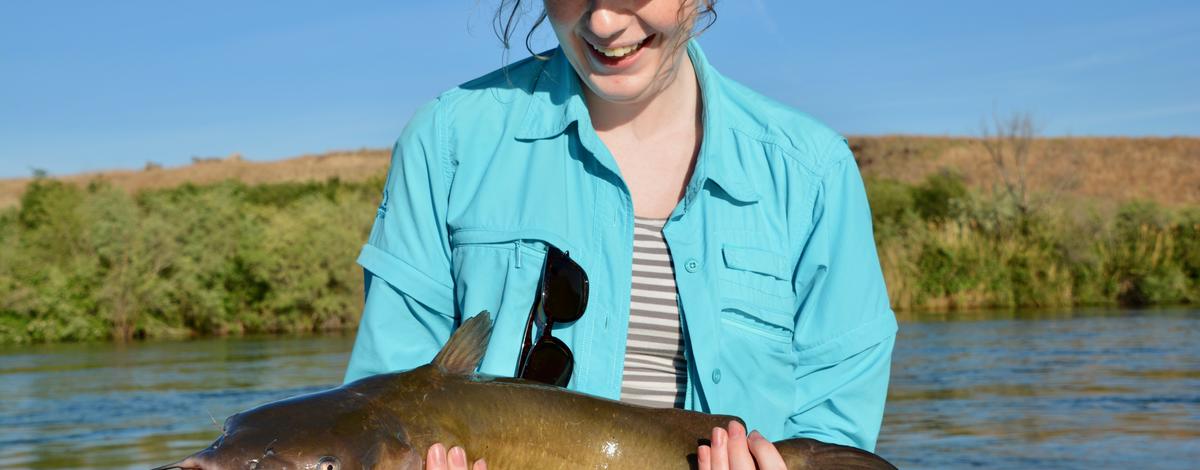Imagine a river loaded with big fish that are eager to bite and put up a mean fight when hooked. Imagine you have most of the river for you and your fishing pals to catch as many fish as you want to clean and eat.
Imagine no more, because this place actually exists, and it’s only minutes from Idaho’s most populous region. If you haven’t already guessed, it’s the Snake River, and while anglers may pine for that scenario to include steelhead and salmon, the river has catfish in almost embarrassing abundance.
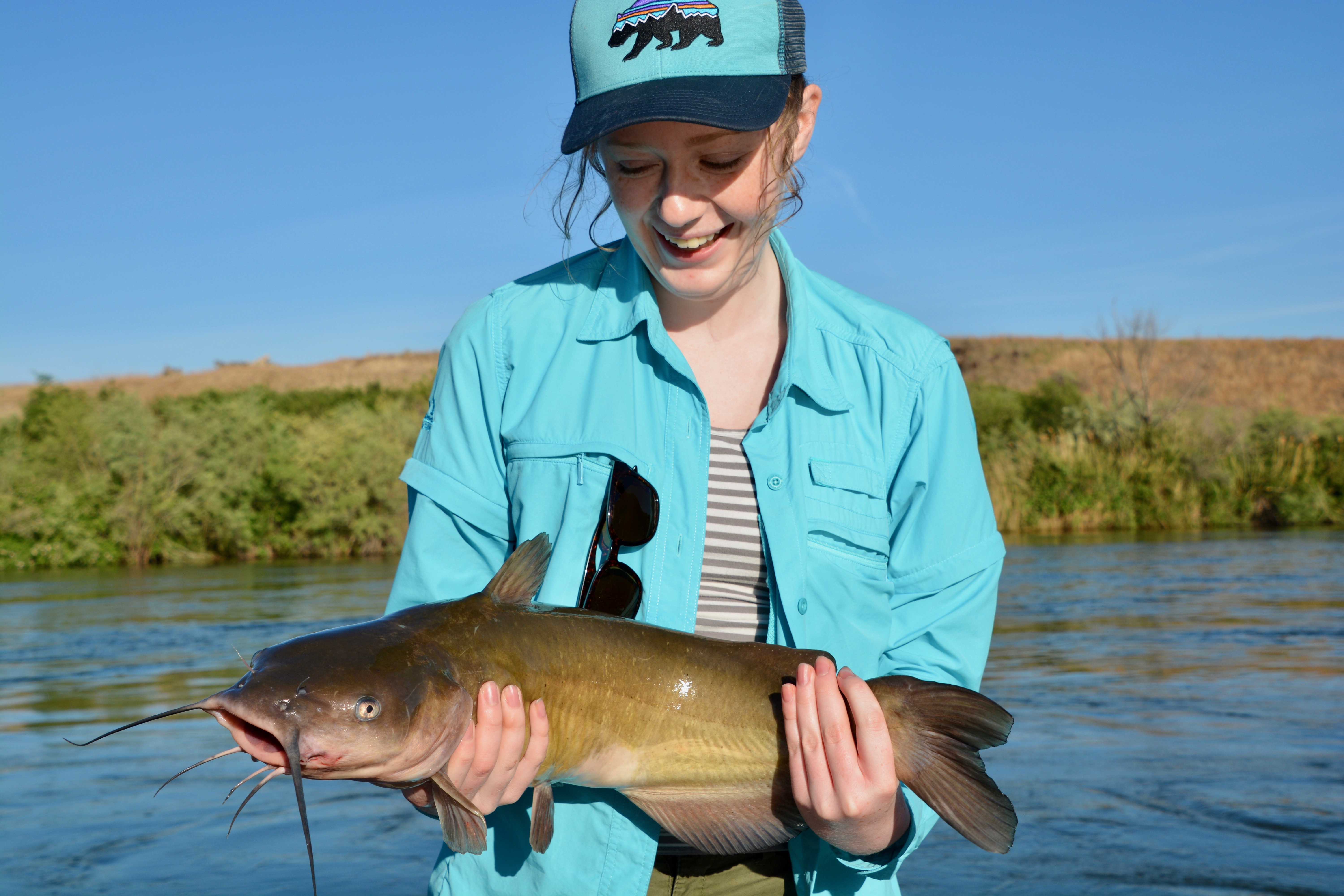
Despite being in the Snake River since the 1940s, catfish fishing doesn’t have a rich tradition in Idaho. They’re kind of an “other” fish that many anglers catch incidental to fishing for something else. But anglers might want to rethink that because they are a big, fun fish to catch, and there are lots of them.
How many? Joe Kozfkay, Southwest Region Fish Manager for Fish and Game pauses when asked, and concedes there’s no way of getting an exact count in a system this large. But he’s comfortable estimating it’s over a million catfish in Snake River and its Southwest Idaho reservoirs in the stretch from Hells Canyon Dam upstream to Bliss Dam. In the prime water between Swan Falls Dam and Brownlee Reservoir, he estimates there are a couple thousand catfish per mile.
Those include both channel catfish and their larger cousins, flatheads, with channel cats being by far the most common. Channel cats are available in such large numbers there’s no limit on them, and previous angling surveys done by the department have shown the harvest is so low it doesn’t affect the population. In fact, there are so many that Fish and Game captures catfish from the Snake River and transplants them into Treasure Valley ponds and elsewhere to provide more fishing opportunity.
Catfish are also available in many of the Snake River’s tributaries, including the Weiser, Payette and Boise Rivers, typically in the lower stretches.
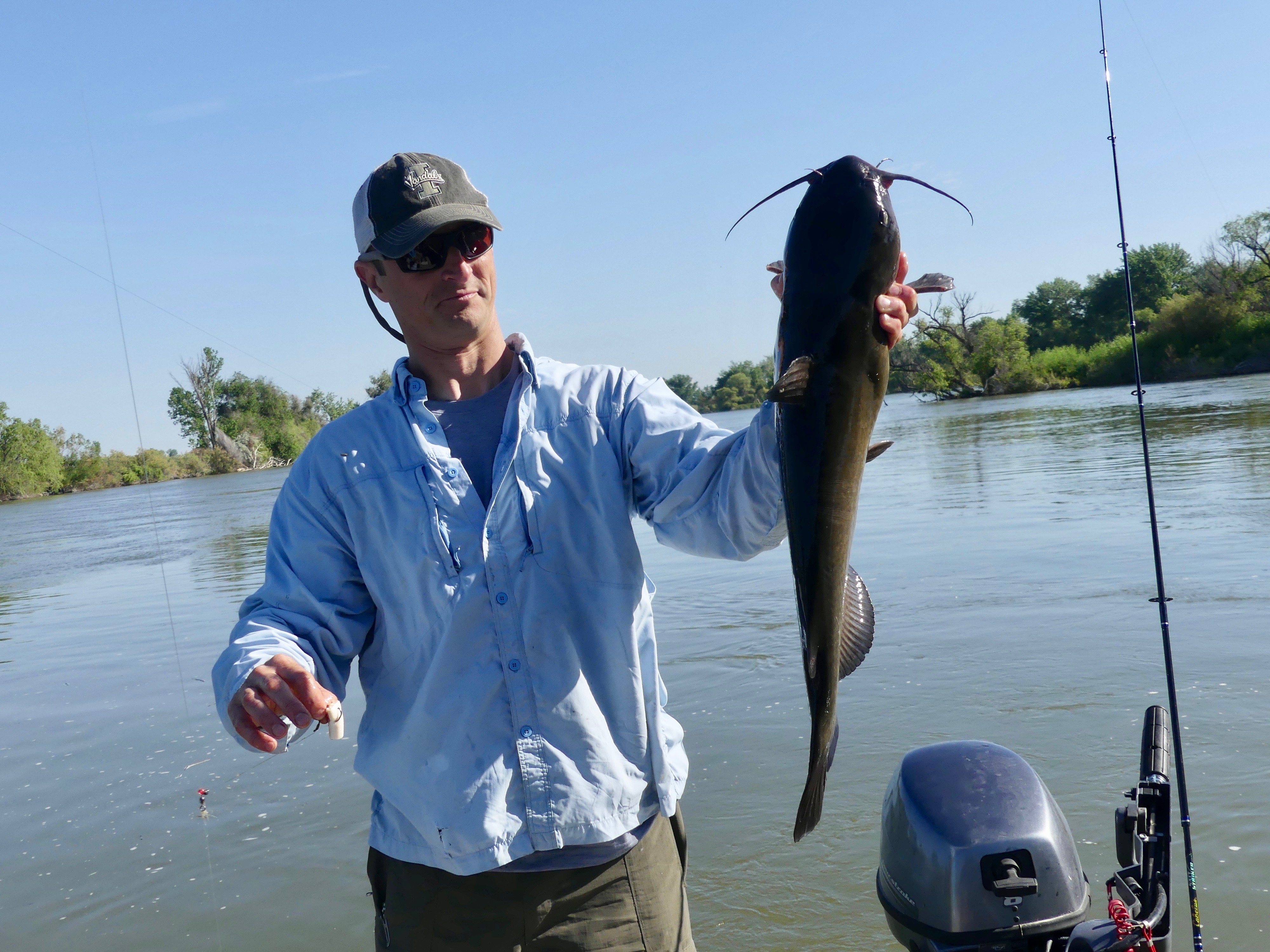
And these catfish aren’t the little bullheads many people are familiar with catching. Channel cats average about 4 to 6 pounds and lots of them range above 10 pounds. The state record is 31 pounds and 38 inches, but it’s practically a runt compared to the record flathead catfish, which weighed in at 58.5 pounds.
Catching cats
Another thing attractive about catfish fishing is its simplicity. You don’t need a whole tackle box – or several – full of expensive, exotic lures and baits (looking at you, bass anglers.) You just need some large bait hooks, some swivels, and some pyramid weights.
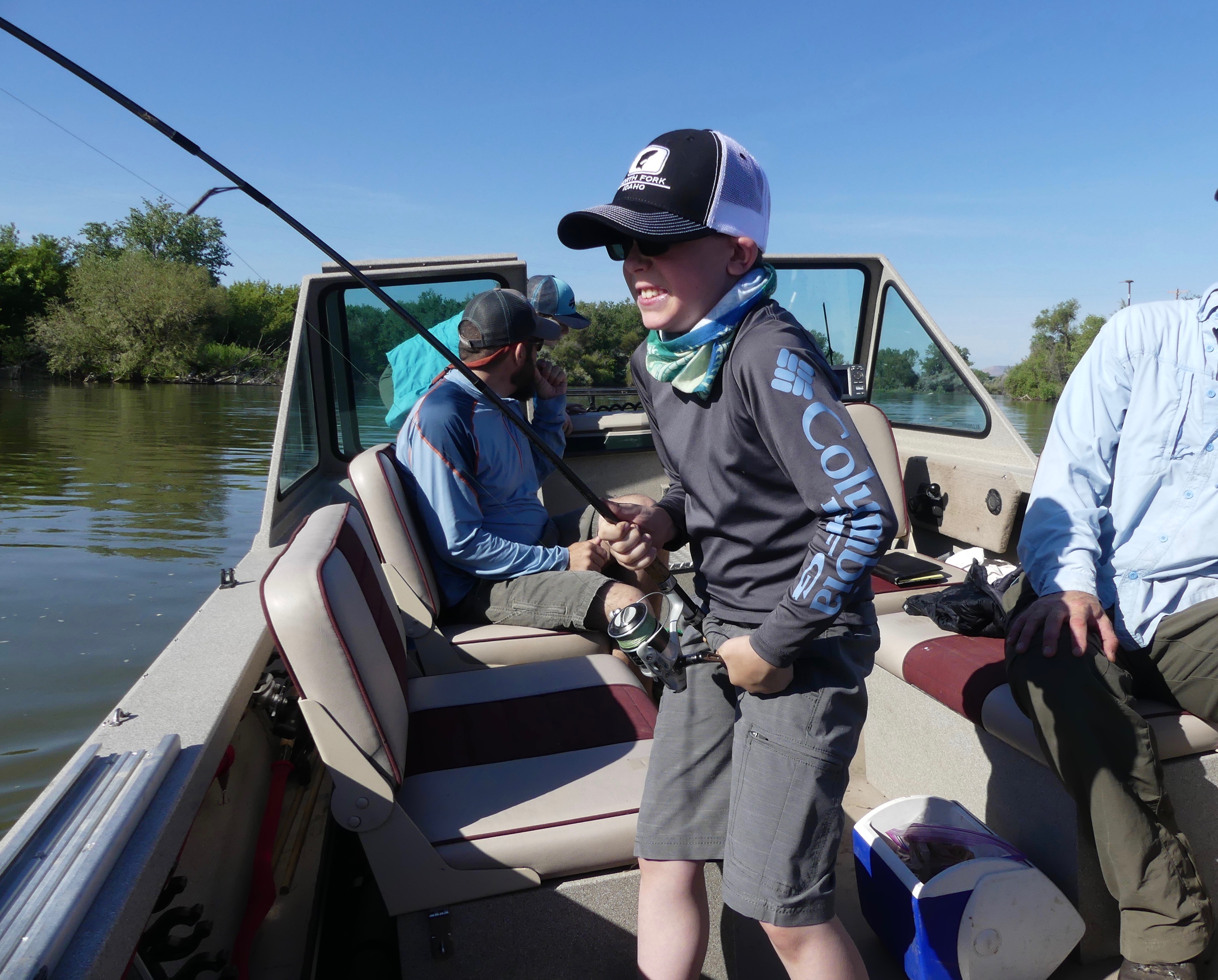
A good basic set up is the “sliding sinker rig' that Fish and Game requires for sturgeon anglers. It’s a good set up for catfish as well, and reduces the chances of lost tackle becoming hazardous to fish and wildlife.
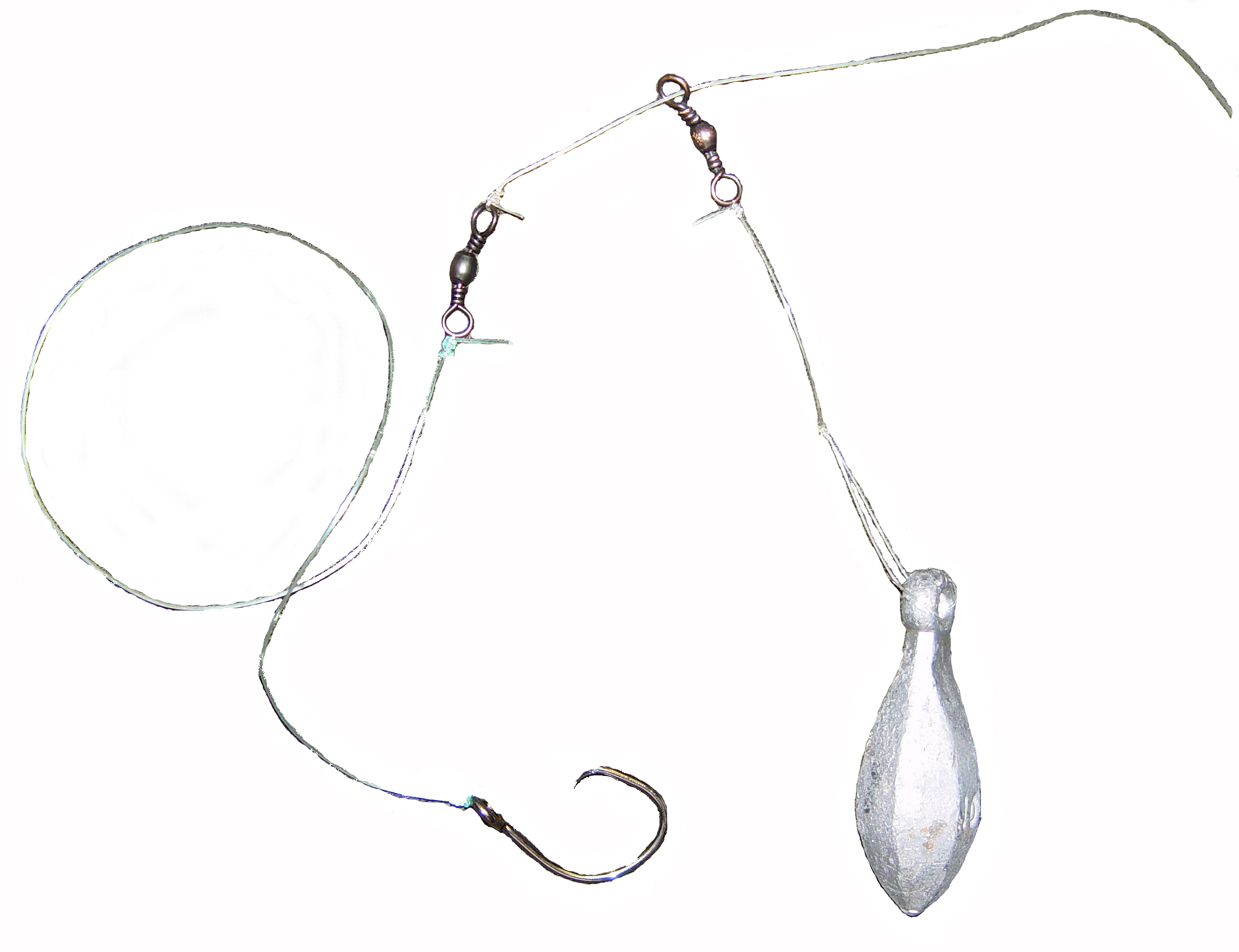
During summer when weeds become thick in the Snake River, people can switch to a float rig and hang or drift bait so it stays above the weeds.
There are many options for bait, and you might start with a common nightcrawler. But experiment with different bait, such as shrimp, cutbait from any oily fish such as carp, sucker or pikeminnow. Crickets are also a popular catfish bait, especially Mormon crickets when they’re available. There’s also a variety of premade catfish baits available at sporting goods stores and tackle shops.
“Catfish are true omnivores,” Kozfkay said. “They will eat anything in the river they can get their mouths around.”
A misunderstood fish
There are many species of catfish, but they all seem subject to the same stereotype: they live in slow-moving, muddy rivers scavenging dead stuff from the bottom. There’s enough truth to support some of the stereotype. Catfish are adapted to living in dark, murky water, and those barbels (whiskers) that give them they’re name are highly sensitive to taste and smell, so they don’t have to rely on their eyesight to find food.
“That reinforces the myth that all they do is hang out in deep, dark holes, and all they do is scavenge,” Kozfkay said.
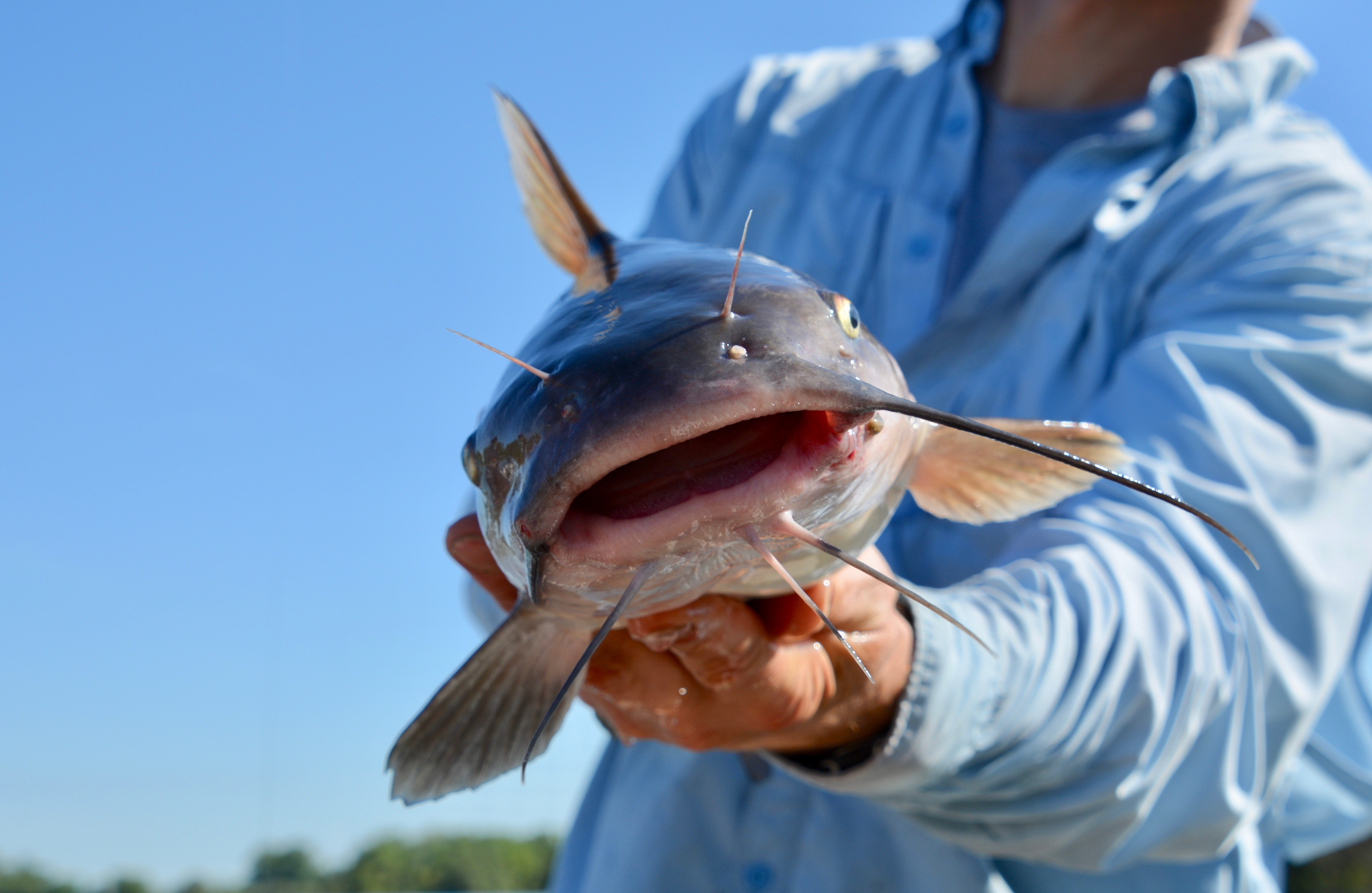
But much of the stereotype is inaccurate, especially for channel catfish. As previously stated, they’re omnivorous and will seek out a variety of food, including hunting live prey. They can also be found in most of the habitat in the Snake River, not just its deep holes.
“They’re very comfortable in rivers,” Kozfkay said. “They really like river features with depth changes, velocity changes, and woody cover.”
Channel catfish will also move into riffles to feed, especially during summer, and can even be seen eating insects on the surface.
So anglers should take note and fish for them in different places. Kozfkay noted the fish are very migratory and move in and out of reservoirs, so you may have to move around to find them. Catfish will find your bait pretty quickly if they’re feeding, so if you go 10 or 15 minutes without a bite, move to another spot.
Piscivorous panic button
If you put some effort into trying several spots, you’re likely to catch some catfish in the Snake River (or its tributaries), so now you’ve cracked the code, right?
Sort of. After you’ve caught several fish, you may notice fishing gets a little slower. It’s unlikely you’ve caught all the catfish in the hole, it’s that the fish may recognize something is amiss in their world. Catfish, like carp, release a pheromone that signals danger to other fish. So when you hook, fight and land a fish, there’s a good chance it will release that pheromone, and the remaining fish will catch a whiff of the scent and flee or stop feeding.
“It seems like if you catch five or six fish out of a hole, they’ve figured it out,” Kozfkay said.
That’s when you know it’s time to move and find more fish. But keep that spot in mind when you return because chances are good you will find them there again.
Time for catfish fry
It’s a tasty tradition, and most people have eaten catfish at one time or another. They're commonly raised commercially and sold in restaurants.
Catfish from the Snake River are also tasty fish, but there’s a consumption advisory from Idaho Health and Welfare that recommends balance and moderation for catfish consumption, especially for children and pregnant or nursing women.
People should balance that advisory with the health benefits of eating fish, and Health and Welfare also states "Eating fish on a regular basis can be beneficial to both adults and children. Fish are a good source of protein, vitamins, minerals and Omega-3 fatty acids."
One easy way to minimize contaminants contained in catfish is eat the younger, smaller ones in the 1 to 4 pound range, eat only the white meat, trim off as much fat was you can prior to cooking, and bake or broil fish on a rack so the remaining fat drips away while cooking.
You can see Health and Welfare's consumption advisory here.
Don't let that discourage you from taking advantage of a great fishing opportunity. It's rare to have a plentiful population of big fish so close and available to so many anglers. Even if you decide to release the catfish you catch, you will have a blast catching them.
Here's some live action of catfishing on the Snake River:

